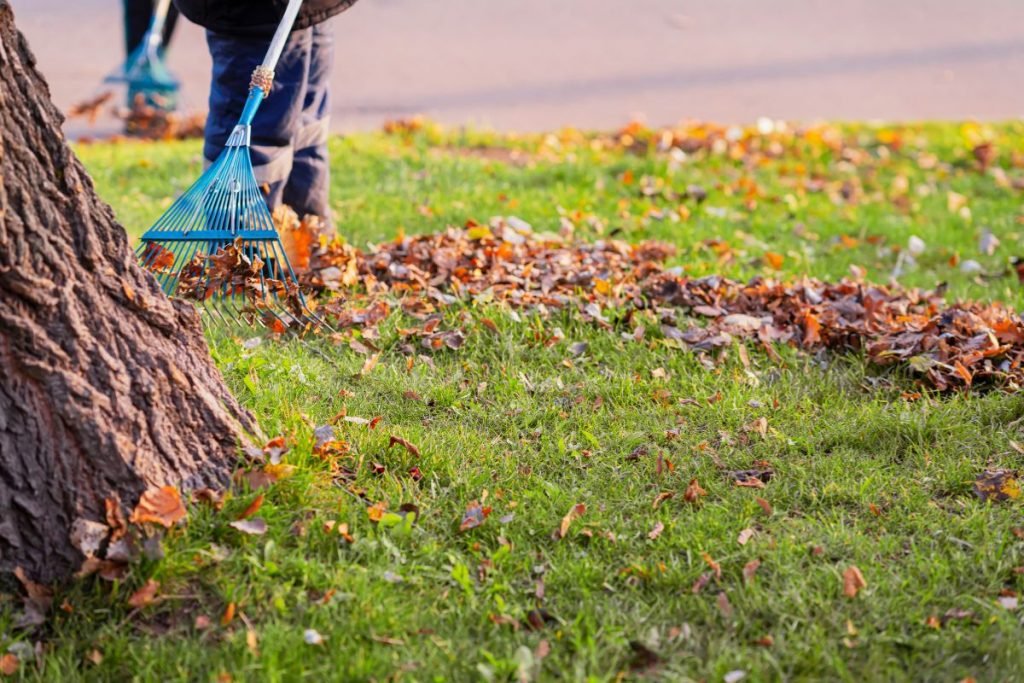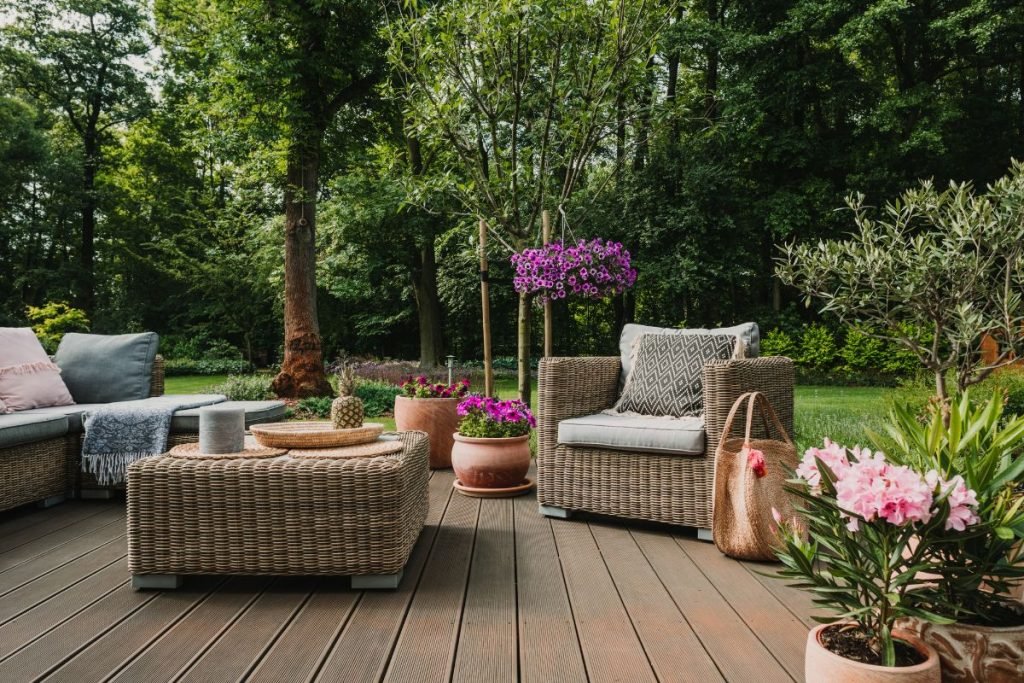With February nearly over, spring is just around the corner, and your garden is likely begging for some attention.
In the UK, many of us are only green-fingered when the weather’s right for it, with ‘39% of adults saying the lack of warm weather stops them from gardening in the winter months’.
However, in a matter of weeks, we’ll be blessed with crisp sunny mornings, blue skies, and that itch to get back out outside in our gardens after hibernating all winter.
If you’re wondering how to prepare your garden for spring, this guide is here to help.
Let’s get started.
How To Get Your Garden Ready For Spring
To get your garden ready for spring, you will need to:
- Clean your garden
- Reuse and compost
- Hire a professional garden designer
- Pay attention to your lawn
- Assess garden furniture and structures
1. Clean Your Garden
The first step to preparing your garden for the spring season is to clean it.
After the cold and windy winter, your garden will likely be strewn with leaves, stalks, and debris. These will need to be cleared away as they’re not only unsightly but can also harbour disease.
That said, you should rake these leaves up before setting your attention to pulling out any weeds that have grown throughout the winter. The good news is that much of this organic matter can be put to better use, but more on that later.
The big clear up might also include sweeping your patio or decking with plenty of water to ensure it’s ready for the season ahead.
To show your garden some much needed TLC, and to learn more about how to spring clean your garden, be sure to read this article.

2. Reuse & Compost
As we’ve touched on above, a great thing about cleaning your garden is that you’ll be left with a lot of organic waste you can add to the compost heap.
That said, it’s worth noting that when it comes to composting weeds, you’ll want to make sure it’s a hot composter, as some weeds can be very resilient and should be composted at a temperature of 63 degrees Celsius (or 145 degrees Fahrenheit).
It’s also worth noting that some species of weed are invasive while others are toxic, and neither should be composted to avoid the risk of contaminating your flower beds.
With spring on the horizon, it’s also time to turn over the compost pile to reveal the bottom layer that will make an excellent mulch for your flower beds and plants.
3. Hire A Professional Garden Designer
With spring on the horizon, there’s no better time than now to hire a professional garden designer.
A garden designer will have many spring garden design ideas up their sleeve and will collaborate with you to create a garden you can enjoy throughout spring, summer, and beyond.
From creating a focal point to planting to zoning your garden, every detail is well-thought-out and takes your lifestyle into consideration.
At Raine Garden Design, we can help you create the perfect outdoor space to enjoy, no matter the season.
Whether it’s a small or large garden, Raine will help you get the most out of your space.
Get in touch with a member of our team today to get started.

4. Pay Attention To Your Lawn
To prepare your garden for spring, you’ll also need to pay some attention to your lawn.
Spring is an excellent time to rake the lawn and scarify the ground in preparation for all the time you’re going to spend outdoors.
Raking your lawn ensures that any debris, leaves, and dead grass are removed from the surface, helping to prevent it from becoming waterlogged.
What’s more, you can take this time to add new grass seed and level off any uneven areas to make sure your lawn is looking its best for the warmer seasons.
5. Assess Garden Furniture & Structures
It’s natural for your garden furniture and structures to be looking a little worse for wear after the frosty wintery months.
Assess your furniture and any structures, such as fences, trellises, and pergolas, for any signs of damage.
How To Revive Garden Furniture
How you revive your garden furniture will largely depend on the material they’re made out of.
For instance, plastic furniture is simple enough to revive with a bucket of soapy water, a sponge, and some elbow grease.
However, if your wooden or wicker furniture is not up to your standard aesthetically but is still structurally sound, a scrub with a bristle brush can do the world of good.
From here, get out your paintbrush and show your garden furniture some love. You’d be surprised by how far a lick of paint or varnish goes!
By getting your garden ready now, you’ll set yourself up to have a beautiful spring season.

How We Can Help
At Raine Garden Design, our award-winning designer, Raine, has over 23 years of experience in landscape design and a comprehensive understanding of the design and construction process.
To learn more about our services at Raine Garden Design, get in touch at studio@rainegardendesign.co.uk or on 07702042559.
Written by Jemima for Raine Garden Design.

